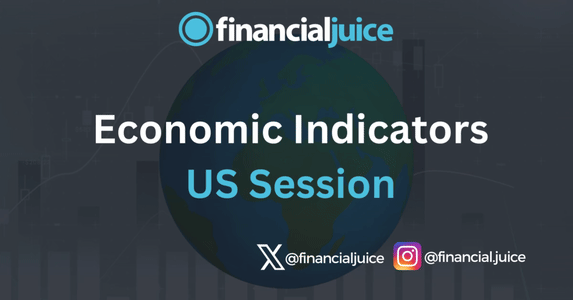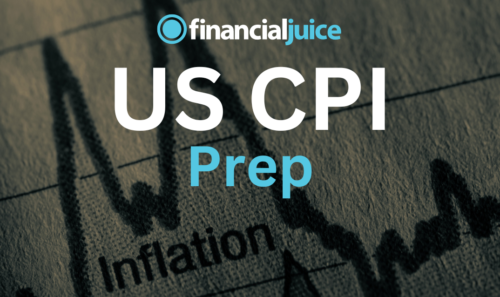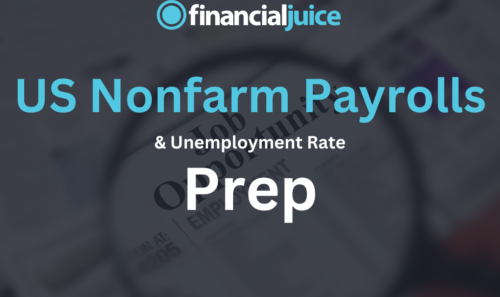
Week Ahead: Economic Indicators (US)
Hey, Traders!
For the July 1st week, here is a list of all of the major economic indicators being released during the US Session, with a brief synopsis of what they represent and what to possibly expect from the markets in reaction.
Monday 1st July
09:45 ET
US S&P Manufacturing PMI June Final
The US S&P Manufacturing & Services Purchasing Managers’ Indices are composite economic indicators derived from surveys of purchasing managers in the manufacturing and services sectors. It measures the prevailing direction of economic trends in the manufacturing sector by assessing factors such as new orders, production, employment, supplier deliveries, and inventories. A PMI reading above 50 indicates expansion in economic activity, while a reading below 50 suggests contraction. It provides insight into the health and direction of the US economy, helping analysts and policymakers make informed decisions.
What to Expect
If it come in higher than expected, generally, this could mean there is more demand for goods and services. This could lead to higher consumer spending, which could be an upside risk to inflation and feed the ‘higher for longer’ rate narrative. If realized, the dollar could see some strength, while US stocks could see some weakness. If it comes in cooler than expected, the opposite could be expected.
10:00 ET
US ISM Manufacturing PMI for June
The ISM Manufacturing PMI, measures the health of the manufacturing sector. Similar to other PMI indicators, a reading above 50 indicates expansion in the manufacturing sector, while a reading below 50 suggests contraction. The PMI is based on five major survey areas — each of which is weighted equally: New orders, Inventory levels, Production, Supplier deliveries, Employment.
What to Expect
The ISM manufacturing PMI has been in contraction for 16 consecutive straight months and from it’s last data release a further decline didn’t spark any recess fears, however markets took it as a positive indication that the Fed won’t have to hold rates for longer. If the PMI were to follow the same trend and decline again markets may view the data in the exact same way.
Tuesday 2nd July
10:00 ET
US JOLTS Job Openings for May
The US Job Openings and Labor Turnover Survey (JOLTS) provides monthly data on job openings, hires, separations, and other labor market dynamics in the United States. It offers insights into the demand for labor and the overall health of the job market. Job openings represent unfilled positions that are actively being recruited for by employers. Analyzing JOLTS data helps assess trends in job creation, labor market tightness, and worker mobility, providing valuable information for understanding the dynamics of the US labor market.The JOLTS data is the oldest bit of employment data this week, representing the month of February, while ADP and Nonfarm Payrolls reports represent the month of March. Having said that, with employment a key piece of the Fed’s monetary policy puzzle, markets will still monitor this.
What to Expect
If JOLTS comes in higher than expected, that indicates there are a larger number of job openings, which means that there is demand on the corporate side to hire more staff. This can be seen as an upside inflation risk, and a threat to the Fed’s 2% inflation target, as higher demand for staff indicates corporations are not being affected as the Fed would like by tight monetary policy. This could cause strength in the dollar and weakness in US stocks.
Wednesday 3rd July
08:15 ET
US ADP Employment Change for June
The ADP Employment Change compiled by the ADP Research Institute utilizes actual payroll data from a diverse array of private-sector employers to gauge changes in employment levels. Excluding government and farm employment, the ADP figures provide insights into the dynamics of the private labor market, covering small, medium, and large businesses.
What to Expect
While the Fed does wish to uphold its dual mandate of 2% inflation with maximum job growth, an overly hot reading may have negative implications for the future of inflation. This could send the dollar up and stocks down.
08:30 ET
US Weekly Initial & Continued Jobless Claims
US Weekly Initial Jobless Claims measures the number of people filing for unemployment benefits for the first time, indicating new layoffs. Continued Jobless Claims track those still receiving benefits, showing ongoing unemployment. Both are released weekly by the Department of Labor and help gauge labor market health.
What to Expect
A higher-than-expected jobless claims number would indicate a higher unemployment rate, which would be in line with increased downside inflation risk. Though this report does not carry as much weight as any of the 3 monthly employment reports that are coming out this week, a higher unemployment rate would be likely to push forward bets on Fed rate cuts, if the deviation was large enough, which could cause strength in US stocks and weakness in the dollar.
09:45 ET
US S&P Services PMI June Final
The US S&P Services PMI is a monthly economic indicator compiled by S&P Global that measures the activity level of purchasing managers in the US services sector.
It assesses areas such as new business, employment, business expectations, and input prices.
As a diffusion index, a reading above 50 indicates expansion, while a reading below 50 signals contraction.
This index provides insights into the health and performance of the services sector, which is a significant part of the US economy.
What to Expect
The service sector has been cited as an upside risk to inflation, as it has remained in expansion during most of the economic tightening phase.
This means that a lower-than-expected services PMI would likely cause strength in stocks and weakness in the dollar, as it would indicate a potential downside inflation risk, which could push forward bets on Fed rate cuts this year.
The opposite is also true, if it were to come in higher than expected, that could cause strength in the dollar and weakness in stocks, as it could feed into the higher-for-longer rate narrative.
Having said that, if we see evidence that inflation is continuing to come down, despite, expansion in the service sector, then a higher read could cause strength in US stocks, as it can feed into an increase in corporate profits.
10:00 ET
US ISM Services PMI for June
The US ISM Services PMI is a monthly economic indicator published by the Institute for Supply Management (ISM) that measures the activity level of purchasing managers in the services sector.
It covers business activity, new orders, employment, and supplier deliveries, with a reading above 50 indicating expansion and below 50 indicating contraction.
The main differences between the ISM PMI and the S&P PMI are:
Survey Focus: ISM emphasizes larger firms, while S&P includes a broader range of company sizes.
Data Components: ISM focuses on business activity, new orders, employment, and supplier deliveries, while S&P emphasizes new business, business expectations, employment, and input prices.
Compiling Organizations: ISM and S&P Global are different entities with distinct methodologies.
What to Expect
The service sector has been cited as an upside risk to inflation, as it has remained in expansion during most of the economic tightening phase.
This means that a lower-than-expected services PMI would likely cause strength in stocks and weakness in the dollar, as it would indicate a potential downside inflation risk, which could push forward bets on Fed rate cuts this year.
The opposite is also true, if it were to come in higher than expected, that could cause strength in the dollar and weakness in stocks, as it could feed into the higher-for-longer rate narrative.
Having said that, if we see evidence that inflation is continuing to come down, despite, expansion in the service sector, then a higher read could cause strength in US stocks, as it can feed into an increase in corporate profits.
10:30 ET
US Weekly EIA Crude Oil Inventories
The US Weekly EIA Crude Oil Inventories report, released by the Energy Information Administration every Wednesday, provides data on the current amount of crude oil held in storage facilities across the United States.
This report helps gauge supply and demand dynamics in the oil market and can influence oil prices and market sentiment.
What to Expect
An increase in inventories suggests lower demand or higher supply, creating a potential downside in oil prices, while a decrease indicates higher demand or lower supply, causing a possible strengthening in oil prices.
Reminder: The API private crude stock change is released the day before, and the releases are correlated.
A certain amount of repricing will occur depending on the results of that release.
14:00 ET
FOMC Meeting Minutes
The FOMC Meeting Minutes are detailed records of the discussions and decisions made during the Federal Open Market Committee (FOMC) meetings.
Released three weeks after each meeting, they provide insights into the economic analysis, policy considerations, and voting outcomes on interest rates and monetary policy.
These minutes help investors and analysts understand the Federal Reserve’s outlook on the economy and potential future actions.
What to Expect
The FOMC meeting minutes do not cause market reactions consistently, as their impact depends on how transparent FOMC officials have been between the last policy meeting and the release of the Fed minutes.
Essentially, market participants will be looking for hawkish or dovish signs in the language.
Hawkish tones (that imply the need for higher-for-longer rates) could cause strength in the dollar and weakness in the S&P 500.
Dovish tones (that implies greater confidence in inflation’s timely return to target and higher chance for rate cuts this year) could cause strength in US stocks and weakness in the dollar.
Thursday 4th July
US Market Holiday in observance of Independence Day.
Friday 5th July
08:30 ET
US Employment Situation for March
US Nonfarm Payrolls
US Nonfarm Payrolls, commonly referred to as NFP, is a key economic indicator published by the Bureau of Labor Statistics on a monthly basis.
It represents the total number of paid workers in the US, excluding farm employees, government workers, and non-profit organization employees.
The NFP report provides insights into the overall health of the labor market, reflecting changes in employment levels.
The data is closely watched by policymakers, economists, and investors for its impact on financial markets and economic policy decisions.
US Unemployment Rate
The US Unemployment Rate is a widely tracked economic indicator that measures the percentage of the labor force that is unemployed and actively seeking employment.
It is calculated by dividing the number of unemployed individuals by the total labor force.
The Unemployment Rate can differ from the Nonfarm Payrolls data due to differences in their definitions and methods of measurement.
While NFP represents the total number of paid workers in the US, excluding certain categories like farm and government employees, the Unemployment Rate considers the percentage of the labor force that is actively seeking but unable to find employment.
US Average Earnings YoY
US Average Earnings Year-over-Year is an economic indicator that measures the annual percentage change in the average earnings of all non-farm employees in the United States.
This data is typically derived from the monthly employment reports released by the US Bureau of Labor Statistics.
Average earnings include wages and salaries, and the YoY comparison helps assess the rate of change in workers’ compensation over a one-year period.
Positive growth in Average Earnings YoY is indicative of increasing income levels, while negative growth suggests a decline in average earnings. Policymakers, economists, and investors monitor this indicator for insights into wage trends and their implications for consumer spending and inflation.
What to Expect
The US nonfarm payrolls is the most highly monitored employment indicator by both traders and policymakers.
A higher-than-expected reading suggests that employment is not slowing, posing an upside risk to inflation.
This may lead the Federal Reserve to maintain interest rates higher for longer, as the FOMC have mentioned that a higher unemployment rate (around 4% according to some officials) is necessary to see inflation fall to the 2% target.
This repricing of US monetary policy may cause weakness in US stocks while strengthening the dollar.
The inverse could also be true, if Nonfarm Payrolls comes in lower-than-expected, this could cause markets to push forward bets on Federal Reserve rate cuts, which could cause strength in US stocks and weakness in the dollar.





